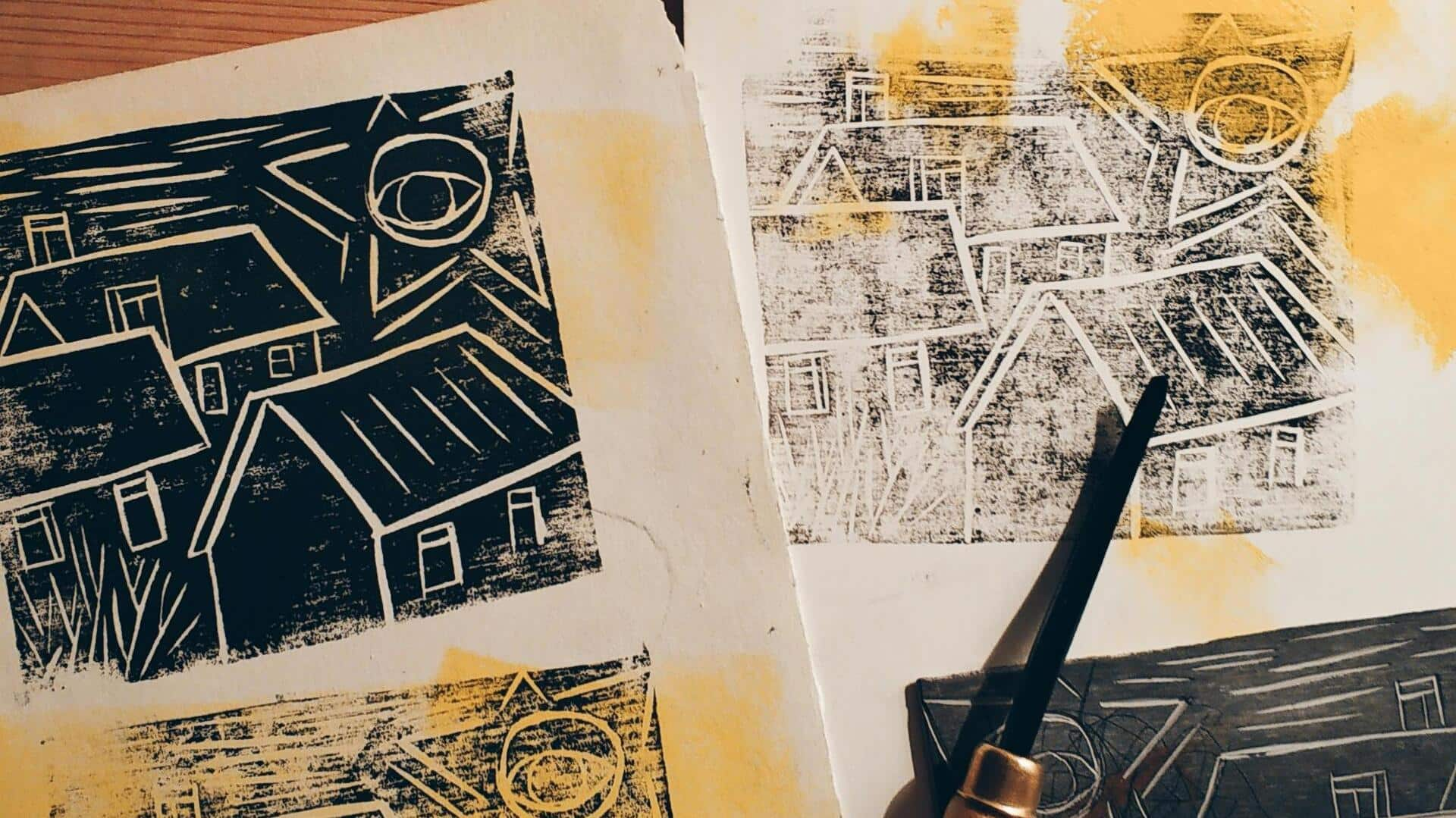
The ultimate beginner's guide to Linocut art
What's the story
Linocut printmaking is a fascinating art form that allows you to create intricate designs with simple tools. This technique involves carving images into a linoleum surface, which is then inked and pressed onto paper. For beginners, understanding the basic tools and techniques is essential to get started. In this guide, we'll explore the key elements of linocut printmaking, providing insights into materials, tools, and processes that will help you embark on your creative journey.
#1
Choosing the right materials
Selecting appropriate materials is crucial for successful linocut printmaking. Linoleum sheets are commonly used as they provide a smooth surface for carving. Beginners may also opt for soft-cut linoleum, which is easier to carve. The choice of ink is equally important; water-based inks are recommended for their ease of use and cleanup. Quality paper that can withstand pressure without tearing is also essential.
#2
Essential tools for beginners
A basic set of tools includes a variety of carving knives or gouges in different sizes for detail work. A brayer or roller helps apply ink evenly over the carved surface. A baren or press can be used to transfer the image onto paper by applying consistent pressure. These tools form the backbone of your printmaking setup.
#3
Understanding carving techniques
Carving techniques are at the heart of linocut printmaking. Start with simple designs by sketching your image on the linoleum with a pencil before carving. Use different-sized gouges to create varied line thicknesses and textures in your design. Practice controlling depth while carving; deeper cuts yield bolder lines, and shallow ones produce finer details.
#4
Printing your first design
Once your design is carved into the linoleum block, it's time to print it. Apply an even layer of ink using a brayer over your carved block's surface. Carefully place the paper over the block and use either your hand or a baren to press down firmly but evenly across all areas of contact. This ensures the impression transfers onto the paper without smudging or losing image detail due to uneven pressure during this stage.